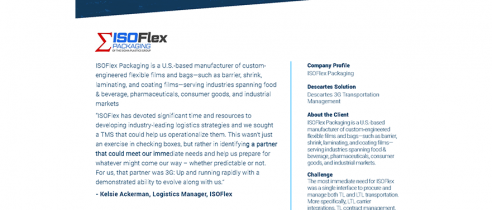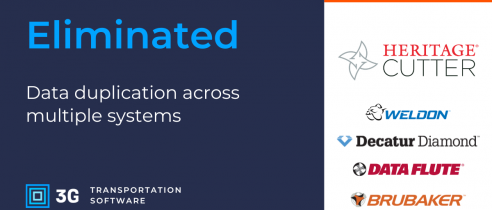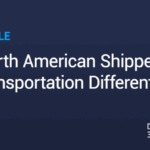In the rapidly evolving realm of autonomous trucks, industry newcomers and established players are leading the charge toward a future where fleets are controlled by satellites, advanced GPS, and cutting-edge computers. Notable instances, such as Uber’s headline-making self-driven beer delivery and Tu Simple’s successful road test last summer, mark pivotal moments as the sector braces for a paradigm shift.
However, the enthusiasm surrounding this technological leap is not universally shared. Amid the excitement, drivers express concerns about potential job displacement, technological hurdles, and persistent safety challenges. These valid apprehensions weigh heavily on the minds of policymakers, underscoring the imperative for an in-depth exploration of this potentially revolutionary transformation within the industry.
The Positive Transformation
Safety Improvements
According to a McKinsey & Company report, autonomous vehicles could decrease traffic fatalities by a whopping 90%. Due to the unmanned nature of said vehicles, the number of humans on the road reduces considerably, thus minimizing the number of highway deaths.
But that isn’t the only reason self-driving vehicles enhance safety.
Most truck accidents are caused by fatigue, impairment, distraction, or another driver error. Since autonomous fleets don’t require drivers, they eliminate these sometimes fatal risks. Replacing human eyes and reaction times with sensors and cameras means near-perfect hazard detection and prevention.
Efficiency Boosts
Naturally, autonomous trucking companies don’t require drivers. As such, they can operate vehicles 365 days a year without supplying rest, food, or sleep. The result? Faster delivery times and incredibly efficient resource use.
Furthermore, the onboard software can optimize shipment routes, decreasing travel times and fuel costs. Also, self-driving trucks can communicate with other autonomous vehicles to prevent delays and accidents.
Cost Reduction
Human drivers require salaries, insurance, and benefits. But computers (i.e., the drivers of autonomous vehicles) don’t need such payouts. Therefore, autonomous trucking companies can drastically decrease costs and improve profit margins.
This outgoing-reducing effect even extends to maintenance and fuel costs. Computer-powered vehicles are less likely to collide and can be maintained remotely — a clear advantage for budgets and engineers. Couple that with their route optimization abilities, and businesses can boast sky-high profits.
Environmental Enhancements
The cost-reducing effect of route optimization is undeniable. However, the global population (businesses and consumers) is becoming increasingly environmentally conscious. Thus, the fuel-saving benefit cannot be overemphasized.
By guaranteeing the most efficient delivery routes, an autonomous truck releases fewer emissions, increasing business revenue while minimizing the impact on worldwide emissions. Since these vehicles are electric, their ability to slash negative environmental impacts is further enhanced.
The Potential Drawbacks
Job Displacement
With the rise of autonomous trucks, a significant concern emerges regarding job displacement for the workforce, particularly experienced truck drivers. Autonomous fleets, void of the need for human drivers, fundamentally reshape the landscape, rendering traditional driving skills less relevant. The demand for highly qualified human drivers diminishes, posing a risk to the livelihoods of those who have honed their skills through decades of experience.
Reskilling Challenges
The imminent wave of autonomous trucks necessitates a paradigm shift in the skill set demanded from workers. Traditional truck drivers face the challenge of adapting to a rapidly changing industry, requiring reskilling to align with the evolving demands of an autonomous future. The need for a new skill set, including monitoring journeys from control rooms, places the onus on workers to embrace technological advancements.
Technological Challenges
Driverless trucks contain 30 to 100 computers. This technological sophistication can go wrong with a singular coding or construction error. While the biggest issue is the safety concerns breakdowns could cause, companies must devise a quick-fix strategy for repairing computer malfunctions on the road.
Moreover, the software powering autonomous vehicles is vulnerable to cyber criminals. And this doesn’t change when someone inside the self-driving truck supervises the journey. Hackers can infiltrate the software and take control of the vehicle.
Safety Considerations
Neither state nor national highways are optimized for autonomous vehicles. Driving is notoriously unpredictable — ducks crossing the street, manned cars taking the wrong exit, stray tires careening across the road, and other events can happen at any time. Thus, accidents are highly likely.
Advanced software may power self-driving trucks, but nobody can code every unforeseen possibility. These vehicles must have protocols to behave appropriately to unusual events to reduce life-threatening safety concerns.
Economic and Industry Impact
Autonomous fleets have the potential to transform the logistics industry, saving sector participants significant sums as they achieve favorable fuel efficiency, negate driver pay, and optimize their shipment routes.
Such a transformative shift will cause extensive job market and workforce changes. Onboard drivers won’t be necessary, so reskilling is essential for individuals’ continued participation in the industry. Analysts believe self-driving trucks will function like aircraft, with “pilots” monitoring journeys from a control room. These professionals will become essential for the longevity of autonomous fleets.
Technological Advancements and Innovations
Today, autonomous trucks come equipped with top-of-the-range sensors, advanced algorithms, and sophisticated artificial intelligence. However, innovations must occur to guarantee the marketed safety improvements, accident reductions, and efficiency gains.
Further AI enhancements must be achieved to establish more accurate decision-making and quick action in the face of ever-changing road conditions. Its research and development in this area, coupled with leaps forward in sensor technology, will see autonomous trucks take the industry by storm.
Regulatory Landscape
Regulatory and legal considerations are deeply entwined in the development and application of self-driving trucks. Governments and regulatory bodies are proactively setting policies, protocols, and standards to ensure the safe and responsible adoption of autonomous vehicles. But they have a long way to go.
Across-the-board uptake of unmanned fleets requires governments to craft regulations addressing data privacy, cybersecurity, legal liability, and safety certifications. Self-driving technology is still in its infancy and has not been highly regulated. This will need to change for the widespread adoption of autonomous trucks by the trucking industry.
Autonomous truck companies have started pushing their agendas through lobbyists and other political and economic means. Their voice may be small at present, but it will logically expand in the future, making adopting the autonomous truck something more companies will consider.
Industry Adoption and Challenges
Currently, very few areas have adopted entirely autonomous trucks. They’re limited to pre-defined zones, particularly warehouses, military bases, and mines. The trucks on the highway still require a human driver, despite slowly adopting self-driving capacities from autonomy levels one, two, and three.
Widespread adoption of self-driving trucks isn’t expected this side of 2035, according to a recent S&P Global Mobility forecast, due to the worldwide lack of infrastructure, concerns about data privacy and cybersecurity, reskilling worries, the need for regulatory changes, and the necessity for improved autonomous technology.
The Autonomous Trucking Roadmap
The trajectory toward autonomous trucks is undeniable and will shape the industry’s future. However, the journey to all-encompassing adoption is nuanced, requiring collaboration and solutions for operational, technological, and legal challenges.
The anticipated positive and negative changes underscore the need for the right reskilling initiatives and infrastructure enhancements to unlock the full potential of a self-driving future for the trucking industry. The road ahead demands a collective commitment to navigate complexities and ensure a harmonious integration of autonomous trucks, driving the industry towards a safer, more efficient, and sustainable future.







